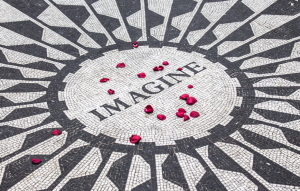
Today is Holocaust Memorial day. This is also a week where a shooting in a Chabad synagogue in San Diego, California, led to the loss of life and injuring of innocent people. So today I am presenting again some thoughts about peace and a concrete process that can help to build it, among individuals, in organizations, and beyond.
Temperatures are rising in the world, politically and physically. The word ‘crisis’ has become overfamiliar. But we don’t have to just watch and wait for things to play out. There are ways to actively work towards conflict resolution and to maintain and increase peace and prosperity and it starts with our thought process.
Growing up with parents who married during World War II, I always heard about living through a war and I’ve always wondered if we could avoid recreating that experience. There have been critical moments since then, but world war has never happened. The Bulletin of the Atomic Scientists has been setting a symbolic “Doomsday Clock” since 1945. The closer we get to midnight the higher the existential threat, and today we are the closest ever in 60 years at two minutes to midnight. The clock is symbolic but it reflects the times.
Choosing to build peace, not survivalism
When we are over-exposed to messages of doom and disaster, it’s tempting to retreat into a cocoon and wait for the storm to pass. Or, for the super rich, according to an article in ‘The Economist’ get busy with “preparedness and survivalism” and that means that “Helicopters are kept fuelled and guns loaded, food and gold is stocked, condos in thick cement bunkers are leased, and residency is sought in far-off New Zealand. “Preppers” see it as a wise investment for when, as they say, the S.H.T.F.”
The alternative is to protect our mental health, and possibly our species, by engaging in the kind of thought process or ‘brainware’ for conflict resolution that fosters peace and prosperity. This can only be enhanced through creating healthy interdependencies and integration among countries towards a common goal. A common goal, according to the Theory of Constraints, has to emerge from analyzing our deepest drivers, or our needs in terms of our fears (need for control) and our hopes (need for vision) – see Conflict Cloud Thinking Process. These needs are legitimate and must be respected.
A common goal
An accurate and transparent common goal is the most powerful path to conflict resolution and to fuel a pattern of choices and behaviour that not only maintains peace, it creates a virtuous cycle that builds prosperity. The Thinking Processes from the Theory of Constraints strengthen our ability to see the big picture. They’ve been around for over 20 years and have led to achieving extraordinary results. Above all, they train us to focus on the needs of all the parties concerned to achieve win-win always. This is the only sustainable way ahead.
If we are to avoid a situation of survival of the richest, let’s remember that we can all tap into a resource that is freely available but not easily exploited: our human ability to think and act systemically for the common good.
Since 1999, we have been presenting a new model for a systemic organization in detail, both in terms of the thinking behind it and how to conduct operations. We work alongside CEOs and Executive Teams to support the shift towards more effective, systemic strategy and operations. Our books include ‘Deming and Goldratt: The Decalogue‘, ‘Sechel: Logic, Language and Tools to Manage Any Organization’, ‘The Human Constraint‘ and most recently, ‘Quality, Involvement and Flow: The Systemic Organization’ . We support our international clients through education, training and the Ess3ntial multi-project software using Critical Chain to schedule competencies and unlock the potential of human resources. Based on our proprietary Decalogue methodology.





Leave a Reply